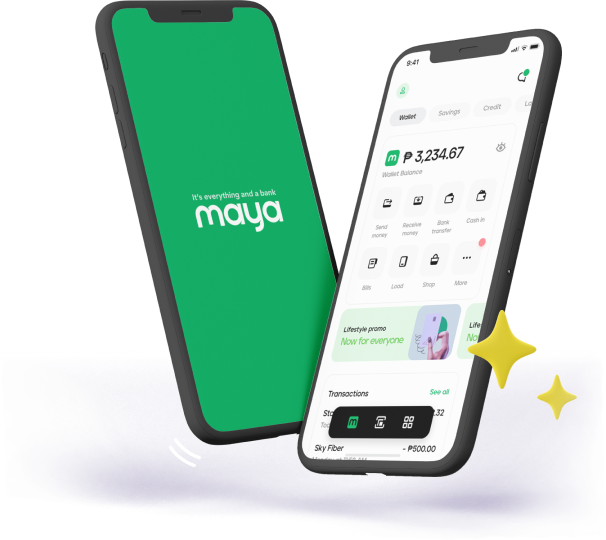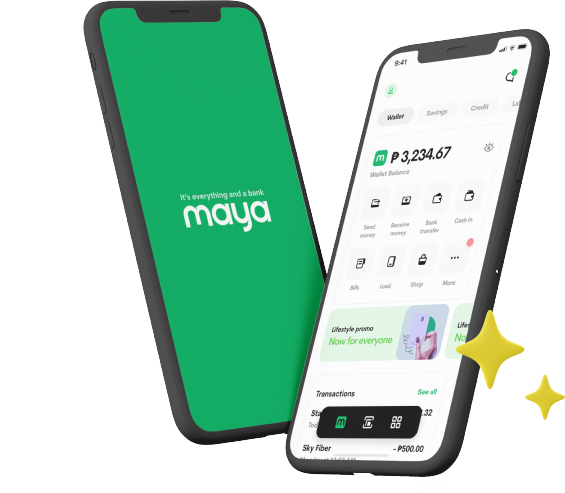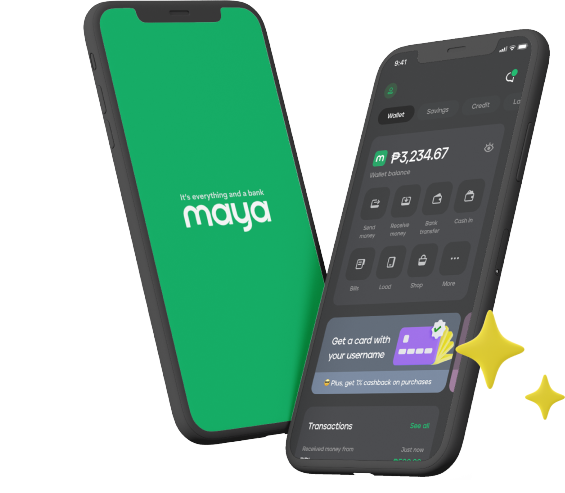- Home
- Services
- User Guide
- All Guides
- Activate Virtual Card
- Bank Transfer
- Bills Payment
- Cash In
- Claim Remittance
- Create an Account
- Crypto
- Email Verification
- Gaming
- Get a Maya Card
- Get Protected
- Link Physical Card
- Mobile Prepaid Load
- Mobile Data
- Pay using Maya Card
- Pay with Maya online
- Pay with QR
- Save
- Send Money
- Funds
- Travel with Maya
- Upgrade Account
- Use Abroad
- Deals
- Store
- Partner Merchants
- Stories
- About Maya
- Help & Support
- Contact Us
- Home
- Services
- User Guide
- All Guides
- Link Physical Card
- Mobile Data
- Activate Virtual Card
- Mobile Prepaid Load
- Bank Transfer
- Pay using Maya Card
- Bills Payment
- Pay with Maya online
- Cash In
- Pay with QR
- Claim Remittance
- Create an Account
- Save
- Crypto
- Send Money
- Email Verification
- Send Money via @Username
- Funds
- Travel with Maya
- Gaming
- Get a Maya Card
- Use Abroad
- Get Protected
- Deals
- Help & Support
- Store
- Partner Merchants
- Stories

Being financially literate and knowing how to manage money responsibly are undoubtedly very important life skills to have. If you think about it, though, many of us typically don’t learn much about money until quite late in life, and only because by then, it has become necessary. The fact of the matter is that schools typically don’t teach practical core money concepts such as earning, spending, saving, debt, credit, and investing. Parents are also often hesitant about burdening their children with money management lessons in their formative years, thus creating a similar knowledge gap at home.
We often tell our children that money doesn’t grow on trees, but we can’t expect that adage to be enough. Exposing your child to the basics of financial literacy and responsibility early can only benefit him or her in the long run. Doing so will make them more comfortable, confident, independent and self-sufficient in the real world as they grow into adulthood. Here’s how to start instilling vital financial skills in your kids today.
Broach the Subject Early
A lot of parents tend to view money issues as emotional ones that can be difficult or uncomfortable to talk about. We all want to give off the impression that we can provide for our families, and none of us believe in passing off adult stress to our kids. However, the inevitable result of being vague about money to our children is that they end up having a nebulous idea of a finite resource during their formative years. Left unchecked, they really just might grow up thinking that money does grow on trees.
To address this, it’s a good idea to have a simplified version of the money talk early with your kids. Don’t be afraid to tell them that money doesn’t just magically appear in your wallets! Explain to them that money is the result of doing work, and that not working means not getting paid. This helps demystify the relationship between work and money for your child.
Show Them Where the Money Goes
Another practical way to teach your child about money is to show them how you budget. You can give your kid a basic understanding of your family’s cost of living by describing where your money goes every month. Providing a visual example can help. Show them how much you get paid, what you spend it on, and why certain expenditures take precedence over others. For example, you can tell them that some of your income first goes toward paying for the bills and other necessities, such as their school tuition and fees. Next, you use some of it to pay for groceries and other household essentials. Finally, you use what’s left on fun things, like eating out or going on family trips.
Finally, you can drive the lesson home by being more transparent to your kids about how much day-to-day things cost. Show them how much money is wasted when they leave food on their plates or forget to turn appliances off when they exit a room, and they’ll soon learn how to grasp abstract concepts such as smart spending and not taking their possessions for granted.
Establish the Importance of Spending Wisely, Sharing, and Saving
Now that your child knows that once money is gone, it’s gone, the next step is to teach him or her how to save it. This is also a good lesson to start exposing your kids to early, as it can help inform the way they think about money and spending it as they grow up.
Experts recommend setting up three piggy banks or jars for your child—one labeled “Saving,” another labeled “Spending,” and finally, one labeled “Sharing.” Use these containers every time your kid receives money, dividing the amount equally among them. Tell them that they can use the money in the Spending jar for small, inexpensive items such as candy or school supplies. It’s also important to teach your kids about philanthropy early, which is what the Sharing jar is for. Encourage them to find a cause they want to support and donate to regularly with the money in their Sharing jar. Finally, tell them that the money in the Saving jar should only be used for big ticket items. It’s best to have them set a goal purchase that will encourage them to save.
Give Them Opportunities to Earn Money on Their Own
Sometimes, the best way to learn something is by doing. This is especially true for something like the concept of earning money. Giving your children small tasks to do at home is a great way to further solidify the idea of working to earn money for them. You can also support them in small business ventures such as opening a sago’t gulaman stand, collecting plastic bottles and cans, or selling their old toys and clothes.
Raising kids to know how to handle money responsibly sets them up for life. When they’re old enough to have a smartphone, you might want to consider setting them up with a Maya account. Maya is the best way for students to receive their allowances. In addition to enjoying a fast and convenient platform, they can also easily track all of their expenses with the app and enjoy perks and discounts from their favorite restaurants and stores.
You might also like
These Stories on Financial Literacy
Maya Customer Hotline: (+632) 8845-7788
Domestic Toll-Free: 1-800-1084-57788
Mobile: Dial *788 using your Smart mobile phone
Domestic Toll-Free: 1-800-1084-57788
Mobile: Dial *788 using your Smart mobile phone
Maya is powered by the country's only end-to-end digital payments company Maya Philippines, Inc. and Maya Bank, Inc. for digital banking services. Maya Philippines, Inc. and Maya Bank, Inc. are regulated by the Bangko Sentral ng Pilipinas.
www.bsp.gov.ph
Scan to download
the Maya app
the Maya app
© Copyright Maya 2022 All Rights Reserved.







